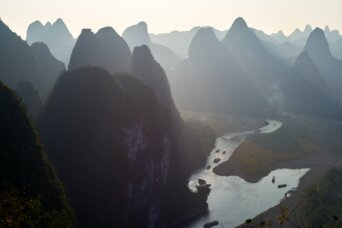- About
- Topics
- Picks
- Audio
- Story
- In-Depth
- Opinion
- News
- Donate
- Signup for our newsletterOur Editors' Best Picks.Send
Read, Debate: Engage.
| topic: | Climate action |
|---|---|
| located: | China |
| editor: | Stella Tsang |
As most people might know, the Yellow River (黃河), located in Northern China, has various nicknames, such as “Mother River” or “the Cradle of Chinese Civilization.” Even nowadays, as the second-longest river in China, it has an irreplaceable role in sustaining the country’s food, energy and ecological security since the river itself is not only an important source of water, but also plays a key role in agricultural production and power supply.
Not long ago, the National Development and Reform Commission and other government departments jointly issued the "Outline of the Yellow River Basin's Ecological and Environmental Protection," which aims to support the basin’s environmental protection, water conservation and urban planning.
The document covers vital ecological areas along sections of the river that run through seven provinces and two autonomous regions, and demands for the coordination between the governance of industry, agriculture, urban and rural life, and mining interests along the basin. The plan proposes that the basin shall be “full of vitality, with people and the waterway coexisting in harmony” by the middle of the century.
The above is not the only initiative taken by the Chinese government this year. Northwest China's Ningxia Hui autonomous region, a pilot zone to promote ecological protection and high-quality development of the Yellow River basin, had introduced the relevant regulations which came into effect on March first.
Financially, among the first batch of the central budgetary investment in 2022, over 3 billion RMB were issued to address the river’s prominent ecological problems. Besides, in March, the World Bank also approved a $380 million loan to China to improve the river’s water scarcity and ecosystem degradation problems.
As a matter of fact, since Chinese President Xi Jinping came into power in 2012, China has considered the protection of the Yellow River as a major national strategy. President Xi often described it as a crucial project for “the great rejuvenation and sustainable development of the Chinese nation," associating the river with a symbol of national pride. It is related to China's eagerness to shape its own image, not only to build national cohesion but also to expand discursive power on the world stage.
However, when reviewing some of the national symbols and projects that were raised before - such as the nation’s “football dream" which has years of massive government support but seems to have fallen short - whether the Yellow River’s conservation could succeed still depends on the effectiveness of the conservation plan’s implementation.
Photo by Farfar
